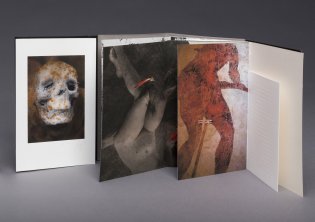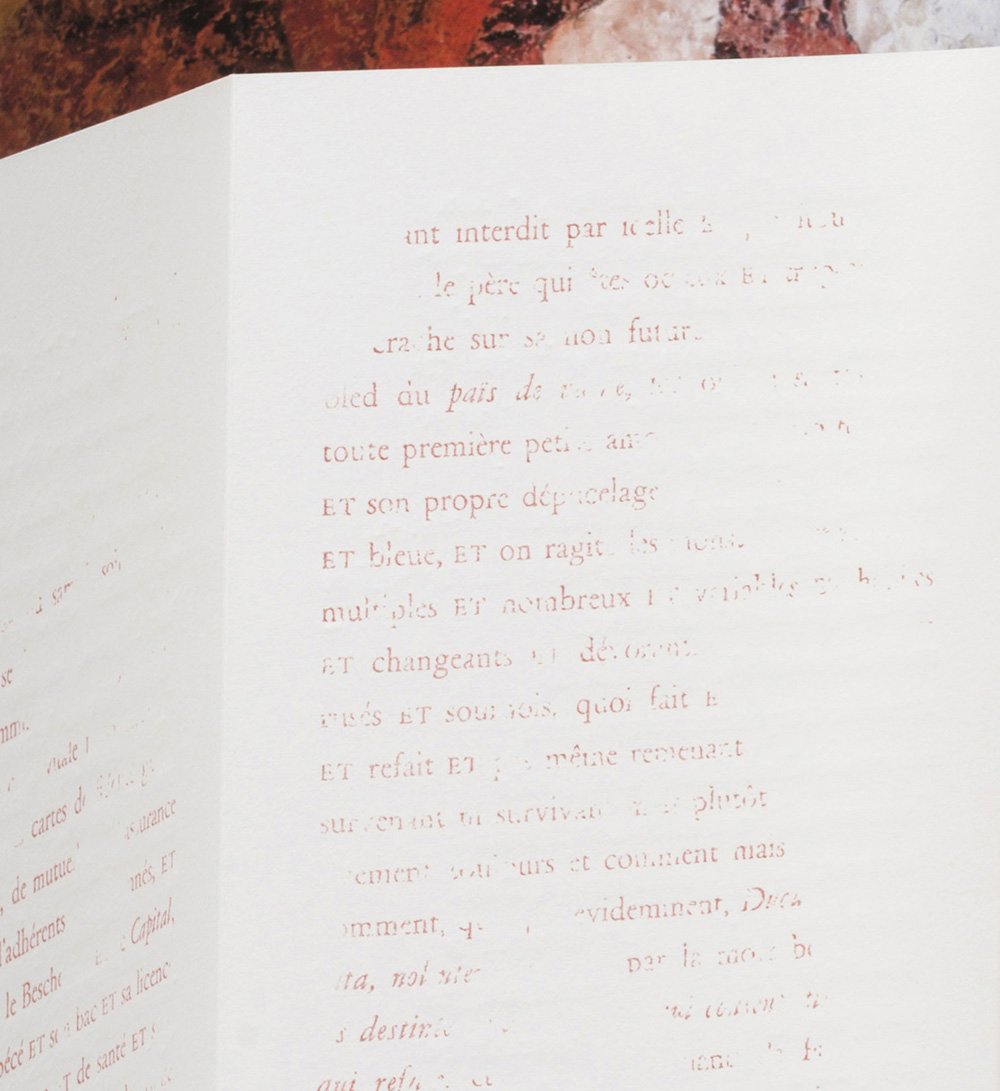Sommes
Year: 2011
Author: Jean-Pascal Dubost (*1963)
Artist: Jean Yves Cousseau (*1953)
Publisher: Éditions Isabelle Sauvage
Place: Plounéour-Ménez
Jean Yves Cousseau, licentie-overeenkomst / licence de contrat / license agreement Cousseau-KB 2022
Jean-Pascal Dubost, Jean Yves Cousseau, Sommes (2011)
Éditions Isabelle Sauvage, established in 2002 as a publishing firm located in Plounéour-Ménez (Bretagne), has its own printing studio. In small editions, artists’ books started being printed in letterpress and etching. In 2008 offset and digital design was added to the range of techniques employed. To date, some 70 titles have rolled of its presses, more than twenty of which have been artists’ books.
Isabelle Sauvage (Essonne, 1969) studied Medieval History. Between 1995 and 2010 she edited books on art for various publishers. She obtained her typesetting and printing skills (2002-2003) in René Jeanne’s printing studio and in Michael Caine’s workshop (2003). By 2004 she was in a position to set up her own printing studio with different presses. The typefaces available in greatest abundance in her studio are Garamond Peignot and Caravelle, the French version of Folio, a sans serif type originally designed by Konrad Bauer.
Jean-Pascal Dubost, Jean Yves Cousseau, Sommes (2011)
Wear and tear
The text of Sommes (2011) was written by Jean-Pascal Dubost (1963) then embellished with photos taken by Jean Yves Cousseau (1953). The theme chosen by the photographer was ruin; to that end he allowed his photos to oxidize or to take on an old appearance in some other way before reproducing them. The theme of the book is wear and tear. The text accompanying the colour photos is set in Garamond and printed in red with an inkjet printer, half of which seems to have been erased. The photos and pages of text interlock so that they can be opened out much like a triptych.
There are also photographs and text segments that have been printed in black; the photos having been reproduced in relief printing with a cliché whilst the texts were set in Antique and printed on BFK Rives paper. On the cover, created with red Pastel Card-cardboard a half-erased piece of text has again been produced. The volume is closed with a magnetic strip; the binding was done by Jeanne Frère. Alongside the 150 copies that were printed there were also 15 deluxe copies, each with an original photo taken by Cousseau depicting a skull and, as though not dead enough, it also shows signs of decay; the photo displays patches of rust.
The text given in black is the complete version; that in red a residue. Does this signify what we recall or comprehend? Dubost evokes in a single long sentence various enumerations of Rabelais and the accumulated notions presented in the Book of Ecclesiastes in the Bible culminating in the notion that we end up ‘décharmé et décharné et dépiauté et défiguré et désossé et démembré’, the only consolation being that every ending requires a new beginning.
Bibliographical description
Description: Sommes / texte de Jean-Pascal Dubost ; photographies de Jean Yves Cousseau. - Plounéour-Ménez : Éditions Isabelle Sauvage, [2011]. - [24] bl. : ill. ; 26 cm.
Printer: Isabelle Sauvage
Edition: 165 copies on BFK Rives (text) and Canson Rag (photos), of which 15 are numbered I-XV
This copy: Number VI of 15 deluxe copies
Note: Bound by Jeanne Frère, with an original photo signed by the artist
Shelfmark: KW KOOPM A10197
References
- Paul van Capelleveen, 'Isabelle Sauvage', in: Artists & others. The imaginative French book in the 21st century. Koopman Collection, National Library of the Netherlands. Nijmegen, Vantilt Publishers, 2016, p. 64-67.
- 'Éditions Isabelle Sauvage’, online op: [Éditions Isabelle Sauvage].
- Julien Giry, ‘Isabelle Sauvage, la typographie en toute simplicité’, in: Ouest-France, 26 octobre 2014.
- Laurine Rousselet, ‘Artisans des lettres’, in: ArMen, 199 (mars/avril 2014), p. 20-23.

